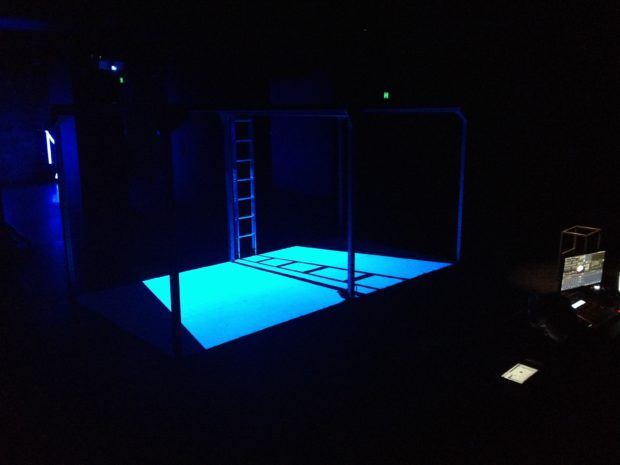Ward of State Post-Production to Premiere
Following the shooting of the film there’s a huge section of making a film which includes post production elements such as:
Editing, sound design, foley, composition of the score, recording the score, the sound mix, colour grading, conversion to DCP format, poser design, printing, distribution, promotion of the screening, ticketing the premiere, testing the DCP, and showing up with a few hours sleep to the premiere.

 Jane Wallace and the edit:
Jane Wallace and the edit:
Initially my plan was to edit the film myself, like Pulse, because editing dance is essentially another choreographic layer. The person who edited the film must understand dance. When I realised that I was going to be too busy with my live work SlowDive occurring at APAM, and that the scale of Ward of State was significantly greater than my little film “Pulse”, I decided to hand the project over to Jane Wallace.
Jane Wallace was a former full time Tanya Pearson classical ballet student, who later trained in Germany before going to QUT to pursue contemporary dance. Jane eventually moved into editing and into graphic design. Jane edits a lot of commercial film, and she also mentored me when cutting Pulse (my first dance film development first project at the Brisbane Powerhouse).
The edit was a massive job – 250 hours plus. I would visit Jane weekly to see how things were progressing. We would make a few changes and Jane would keep going until our next meeting. I learnt a lot from watching Jane edit and the creative decisions she made in weighing up which shots to choose (eg, best cinematographic shots versus best choreographic/ movement shots)
 Susan Hawkins and the score:
Susan Hawkins and the score:
In the beginning stages, Susan played me some of her work that she thought I might like the vibe of for the film. I worked with some of the compositions as background “vibe’ of choreography, but I deliberately did not want to choreograph to anything specific initially.
Jane and Susan worked in an interwoven way. There is no dialogue in Ward of State. Because it was not choreographed to any music, and because we were recording sound on set, all of the movement was performed in silence.
This meant that every take was slightly different in pace and Jane had to find a rhythm in her edit from the movement (another reason why the editor needed to be a dancer). At about the same time Susan started composing to Jane’s edit in progress, but not locking down the exact pace.
Where footage had not been edited, Susan would use the wide shot to take her music cues from, however it was more handy for her to work with the cut version so she could emphasise certain sounds in the score to match how closely the movement was cut. Susan would sometimes then move into composing the next section and then Jane would actually cut to the music. It was a collaborative process that worked in both ways, and that is definitely unique to dance film.
Collusion Music Australia and Jonas Hill:
Collusion Music Australia played Susan’s composition, which was recorded and mixed by Jonas Hill and then handed over ready for the final found mix. But the Foley, and atmosphere had to also be added.
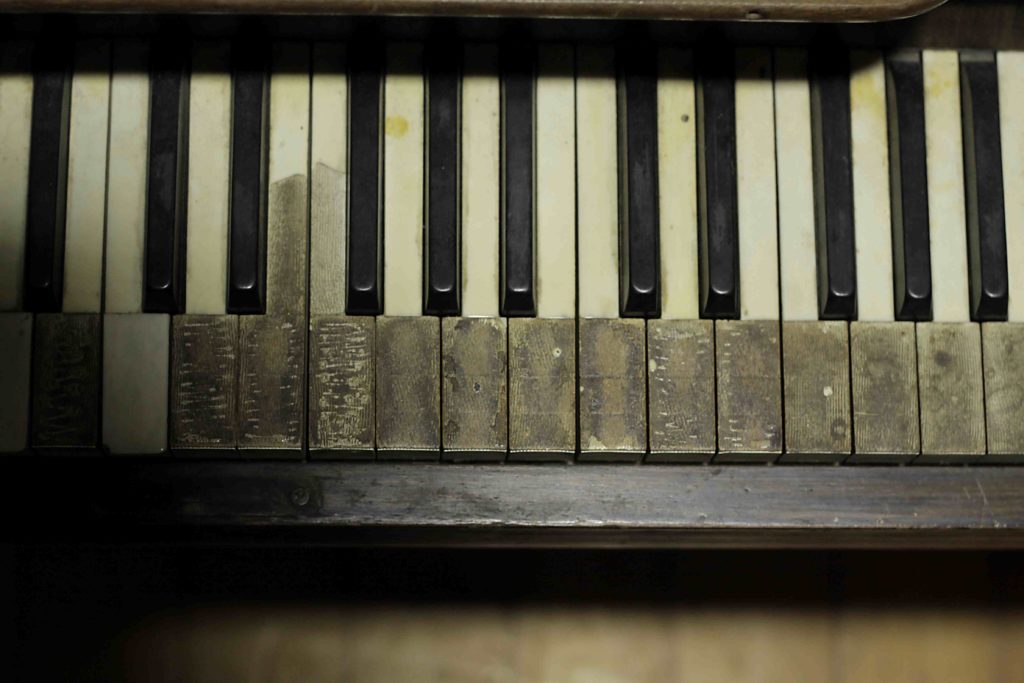 Sound Design: Sound design was an eye opener, but I learnt so much about sound in the final stages of Ward of State. Sound is essentially half of the film. The score was sounding great, but it’s a dance film, and it also required all the film aspects such as Foley, and atmosphere.
Sound Design: Sound design was an eye opener, but I learnt so much about sound in the final stages of Ward of State. Sound is essentially half of the film. The score was sounding great, but it’s a dance film, and it also required all the film aspects such as Foley, and atmosphere.
When you make a dance film (or even a regular film) it’s not just about marrying the dancing and cinematography. The other important ingredient is sound. Under the umbrella of sound there three very important things to include. I have to thank my brother (who is a film director) for his mentorship here.
1. The score We had that under control to a point, but as I mentioned above, as Jane’s edit changed (using sections from various takes), the score also needed to change. This worked both ways as Susan would compose a section, and Jane would try to cut to the score, but then a change in the edit would see a change to the score. It was a collaboration between the editor, and composer in this regard.
2. Foley Sounds of actual things occurring such as the sound of the dancer hitting the floor when they fall, or the sound of the curtain dropping. This is a whole job on its own. Three weeks prior to the premiere of the film (the week of my show Flaunt), the person who was engaged to do the sound design decided it was not for him to do, and left me with a USB with just a hand full of recordings. I tried to find someone to pick the job, but there was not enough time, so I had to learn quickly!
Using sound from “in-camera” and from my iPhone! Every sound was layered into Final Cut Pro. The meant editing out the sounds of talking on set, and matching the live in-camera sound from camera 2. The main camera did not record sound. I also had to access the sounds recorded on my iPhone – which I recorded for reference of choreography! It was strange because at the time, I had a hunch that I would need to use these files for reference, but I certainly didn’t think it would be for doing the sound design myself. I ended up actually using some of the sounds I recorded on my phone because the quality of the microphone is better than in the film camera. However, there were still sections where I had no sound to reference. Rehearsal footage did not sound realistic, so that meant trying to re-create the sounds. I was out of my league here.
Re-creating the dance for Foley with Kara. I had been recommended to work with a Foley artist called Kara who came over to Mill Street Studios and recorded the dancers performing the movement. It had been many months since the shoot, and the dancers would have to re-learn the choreography. Furthermore, lead dancer Richard Causer had been back in London for many months at this point, so dancer Gabe Comerford kindly offered to learn Richard’s movements. Fortunately, Libby McDonnell was in Brisbane, and Libby and Gabe re-in enacted some scene while we recorded the sound in 5.1 digital and 2.1 with Kara. We had a few laughs over this process as Gabe did his best to impersonate Richard (even down to his voice).

3. Atmos: All films require atmosphere to enhance the mood in places. This is not left to the composer or to the Foley artists. It needs to be done by the sound designer. I had to be that person. I was able to access a database with lots of available atmos. From here these were layered into my timeline, and listened to it over and over again as I tweaked it. The project at this stage then looked like this:
Final Mix The final stage was the final mix which occurred at Cutting Edge in Brisbane as i needed to have the sound professionally mixed and mastered. That meant setting the levels of the score, Foley, and Atmos. At Cutting Edge, they also fixed the placement and treatment of some of the sounds I had layered in, and placed effects on certain sounds.
We re- recorded some of the sounds that didn’t sound right including the “slops” sounds of the meals the convent girls ate. Rosco’s left over curry was perfect to achieve these sounds.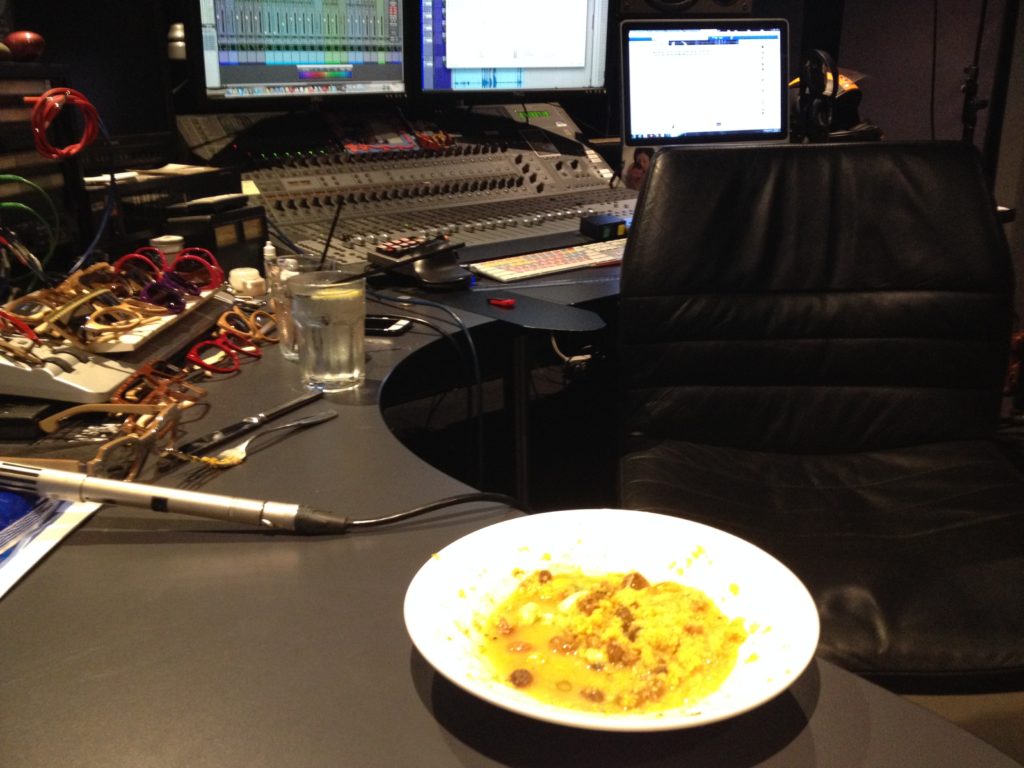 The final master was exported at 24fps and 25fps because I was going to need both frame rates for the film.
The final master was exported at 24fps and 25fps because I was going to need both frame rates for the film.
Colour grade:
Before the edit and sound could be put together, the final edit had to be colour graded. Colour grading is the process of altering and enhancing the colour of a motion picture, video image, or still image, electronically, photo-chemically or digitally. This is to ensure that the entire film has the right tones, and that shot colours and depths match up. For example, the range of depth of blacks might be increased, or a particular hue removed. This is very involved process of colouring every shot selected. There was over 1000 edits in the 30-minute film and took about 3 or 4 days.

The DCP: A Digital Cinema Package (DCP) is a collection of digital files used to store and convey digital cinema audio, image, and data streams. A DCP is the digital equivalent of a 35mm film print. It is what you give to a commercial theatre so that they can screen your movie on a digital (also known as “D-Cinema”) projector. Like a 35mm print, a DCP is a worldwide standard. If you walk into any D-Cinema theatre, anywhere in the world, they can play your DCP without a problem.
 Once the DCP is created, it takes time to be “ingested” into the cinema’s projector, so I had to take it to the cinemas a week before the screening because checking it is crucial. Things can go wrong. Fortunately, all was good for the Ward of State DCP.
Once the DCP is created, it takes time to be “ingested” into the cinema’s projector, so I had to take it to the cinemas a week before the screening because checking it is crucial. Things can go wrong. Fortunately, all was good for the Ward of State DCP.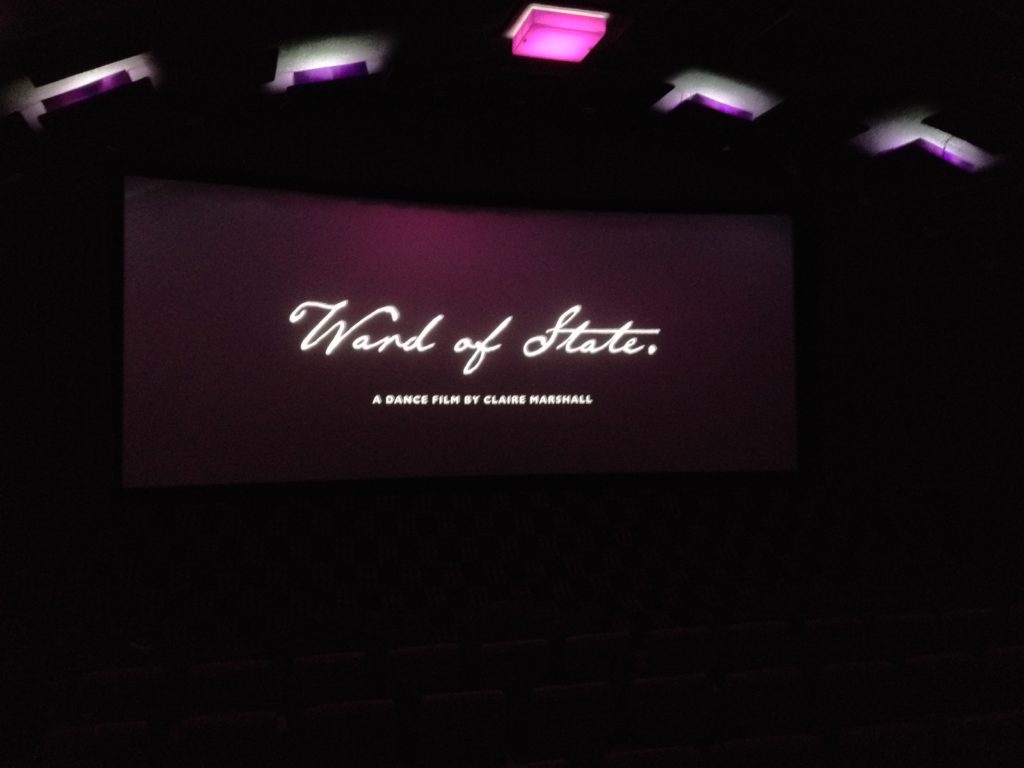
Screening Ward of State: As expected, there was a lot to organise for the screening. It was much like inviting people to a live show, with a longer list of people to include on the complimentary list. Jane Wallace designed the posters and premiere screening special poster, and we had them printed and distributed. Tickets were sold through try booking. Most were free tickets, but the sales supported the cost of the hire of the theatre for the two screenings.
Adam Tucker hosted the event as well as a brief Q&A at the conclusion of the film. As always, he did an amazing job. Most of the cast was present, as were most of the crew and team.
.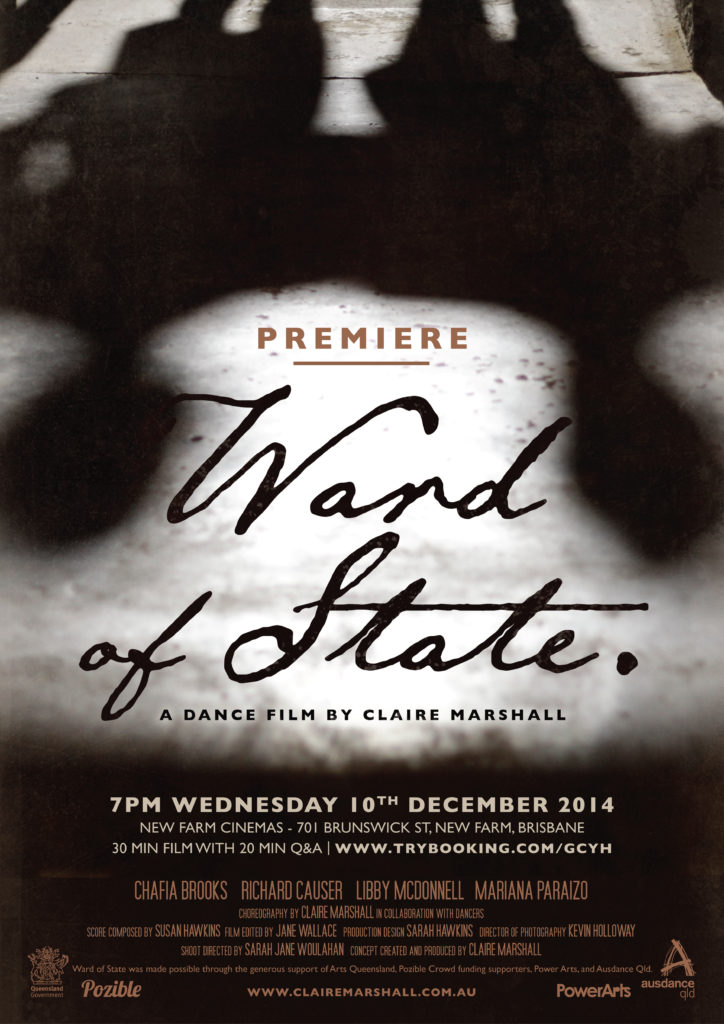
Over 300 people attended the premiere with 200 in the first screening at 7pm (capacity) and 100 people in the second screening at 8:30 on the 10th of December 2014 at the New Farm Cinemas. Some of my family members (who I had never met) but that who I had connected with through making the project surprised me by attending. It was very exciting for everyone involved to see the final product.
Recently “CinéWomen” (made comments on Ward of State saying: We have been really impressed with your dance film, and we appreciate the way you capture subtle, unconscious emotional reactions, as well as your refined cinematography and choreography reminding us of Pina Bausch’s Die Klage der Kaiserin.”
The next step was to submit the film into some Dance film festivals and see how it would fare.
